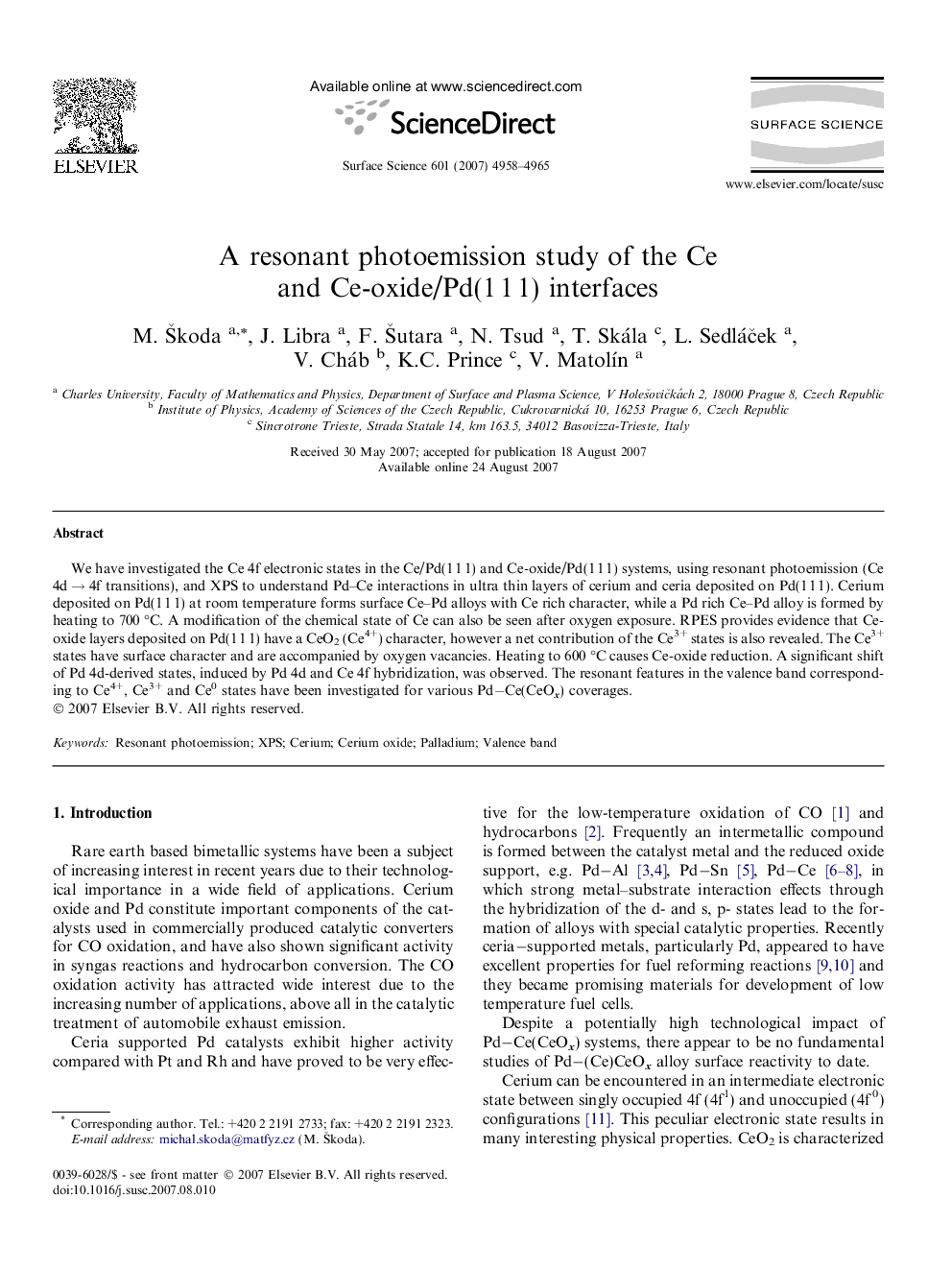| Article ID | Journal | Published Year | Pages | File Type |
|---|---|---|---|---|
| 5424937 | Surface Science | 2007 | 8 Pages |
We have investigated the Ce 4f electronic states in the Ce/Pd(1 1 1) and Ce-oxide/Pd(1 1 1) systems, using resonant photoemission (Ce 4d â 4f transitions), and XPS to understand Pd-Ce interactions in ultra thin layers of cerium and ceria deposited on Pd(1 1 1). Cerium deposited on Pd(1 1 1) at room temperature forms surface Ce-Pd alloys with Ce rich character, while a Pd rich Ce-Pd alloy is formed by heating to 700 °C. A modification of the chemical state of Ce can also be seen after oxygen exposure. RPES provides evidence that Ce-oxide layers deposited on Pd(1 1 1) have a CeO2 (Ce4+) character, however a net contribution of the Ce3+ states is also revealed. The Ce3+ states have surface character and are accompanied by oxygen vacancies. Heating to 600 °C causes Ce-oxide reduction. A significant shift of Pd 4d-derived states, induced by Pd 4d and Ce 4f hybridization, was observed. The resonant features in the valence band corresponding to Ce4+, Ce3+ and Ce0 states have been investigated for various PdâCe(CeOx) coverages.
